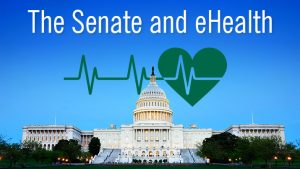In an effort to encourage the nation’s hospitals and doctor’s offices to embrace electronic health records (EHRs), the federal government has offered stimulus packages for healthcare organizations who meet “meaningful use” criteria.
EHR usage is gaining momentum, with the number of hospitals with at least basic electronic health records almost tripling between 2010 and 2012, according to Health Information Technology in the United States: Better Information Systems for Better Care, 2013.
The report, provided by the Robert Wood Johnson Foundation and co-authored by the Harvard School of Public Health and Mathematica Policy Research, goes on to explain that 44 percent of hospitals and 38 percent of physician’s practices are using EHR.
This still leaves over half of hospitals and physician’s practices lagging behind with EHR implementation. These doctors and hospitals have until 2015 before federal penalties in the form of reduced Medicare and Medicaid reimbursements will kick in. Healthcare facilities that do make the switch will reap federal financial rewards.
Though making these technology and process changes while following federal rules will take work, there are numerous benefits.
The federal government said the change has created 50,000 healthcare IT jobs and the need for healthcare professionals with training in EHRs will grow by more than 20 percent.
Programs such as a master’s certificate in health informatics can help nurses, clinic owners and doctors understand the technology and complexities of healthcare IT.
Training in health informatics increases your value at your current job or to a prospective employer. At some schools, courses in the graduate certificate program may be applied to a full master’s in health informatics degree.
To avoid EHR penalties, healthcare facilities need to make the switch to proper EHR implementation. To do that, employees will need training. Health informatics education can help.
Meaning of “meaningful use”
To avoid EHR penalties starting in 2015 and rising yearly until 2019 means more than just going from paper to computer. The government requires “meaningful use” of those EHRs.
So what does “meaningful use” mean?
HealthIT.gov lists 15 core objectives in the first stage of meaningful use implementation and 17 in the second stage. Those objectives cover these main areas:
- Improving safety, efficiency and quality of care
- Reducing health disparities
- Engaging patients and their families
- Improving coordination of care
- Improving public and population health
- Ensuring privacy of health information
In addition, meaningful use requires using federally certified EHR technology. There are specifications sheets for hospitals and health professionals that provide the exact requirements for the meaningful use criteria for eligibility in the Medicare and Medicaid EHR incentive programs.
The ultimate goal for meaningful use compliance is to empower medical professionals and facilities, provide them with stronger data and research and improve efficiencies. The goal is to improve the outcomes of population health and strengthen clinical outcomes.
Change can be difficult
Even back in 2001, a National Institutes of Health publication showed switching to EHRs took time. Initial patient visits to doctors who used EHRs took 37 percent longer.
Major technology advances since 2001 may ease some of the time troubles, but productivity and the number of patients seen may lessen at the very start.
Becoming familiar with the technology can help make these early adjustments easier. It’s vital to involve physicians, nurses and support staff from the start when switching to EHRs to ease the transition and increase efficiency. Educating all of the key players is also important.
New technology choices
Part of the meaningful use requirement is employing EHR technology for concrete purposes and using technology that can exchange information.
With potentially hundreds of companies providing medical record systems and more than 1,000 programs, users have to be sure programs can communicate with each other, transfer and compile data the same way and use a federally approved vocabulary for the information.
It is essential to understand technology options and evaluate their varied functions and limitations to increase efficiency. Equally essential to satisfying meaningful use requirements and avoiding penalties is learning to integrate EHR systems with an office or hospital’s needs.




